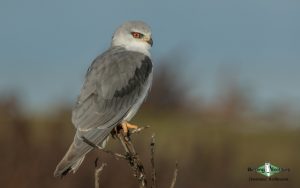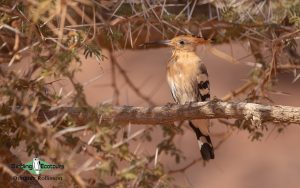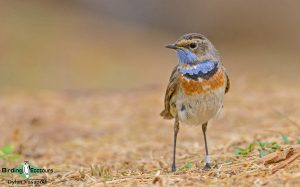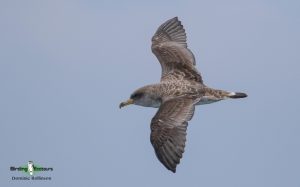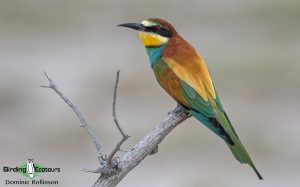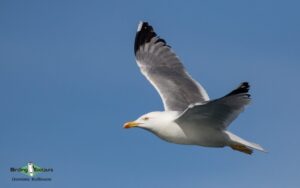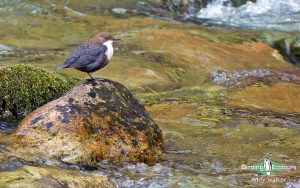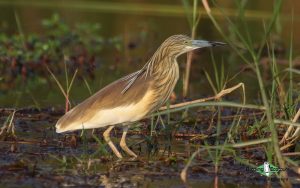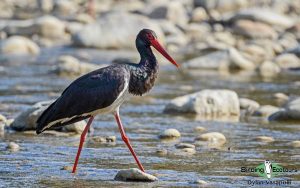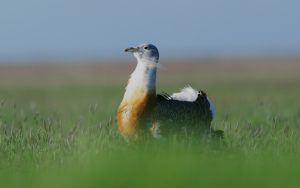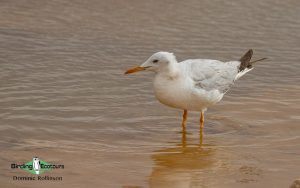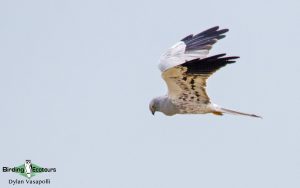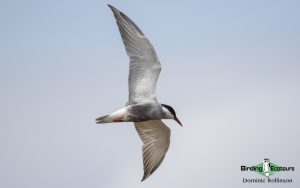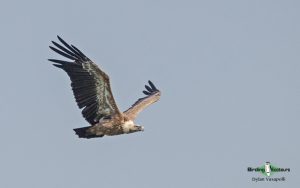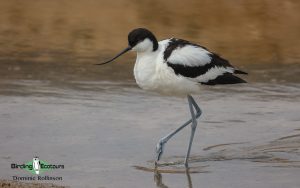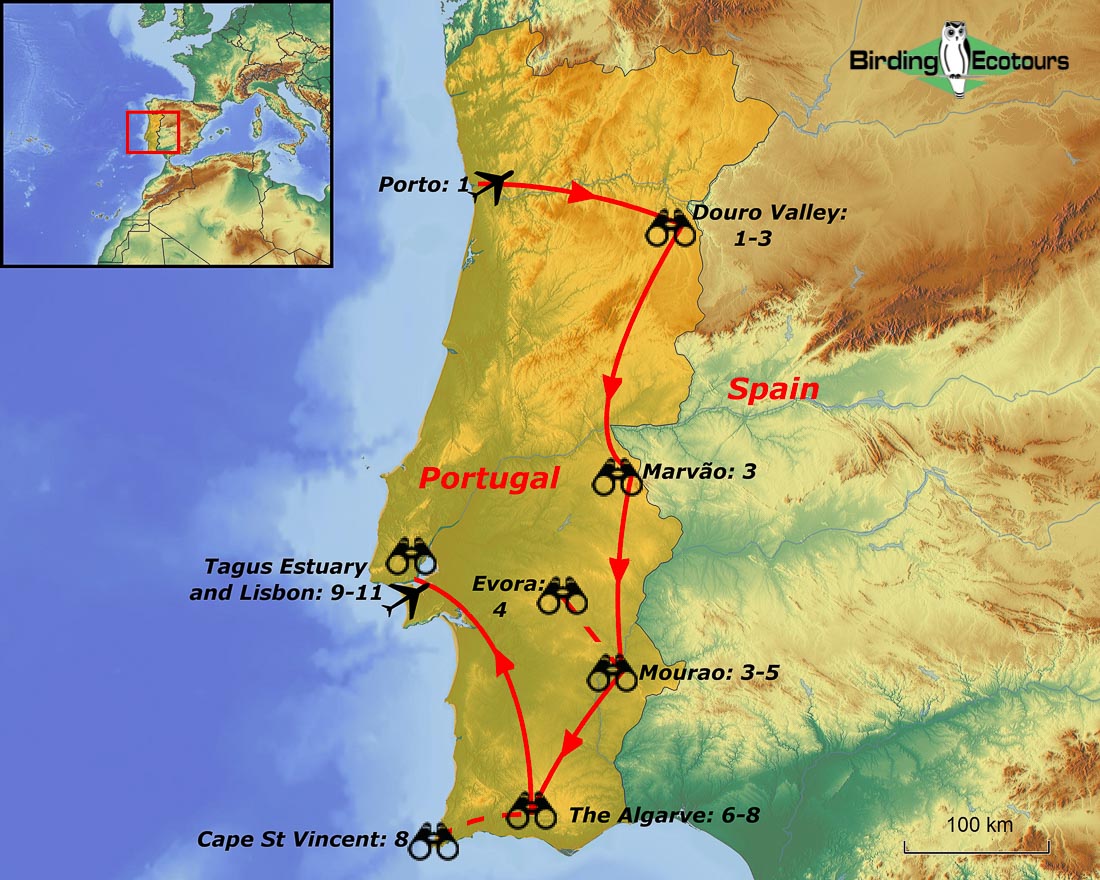Portugal Birding Tour: Birds, Wine & Culture
Go to: Portugal Birding Tours | Birding Tours in Europe | All our birding tours
Portugal Birding Tour: Birds, Wine & Culture
November 2025/2026
Sitting in Europe’s southwestern corner gives Portugal the perfect position to offer a huge variety of experiences for any visitor and an excellent location for a birdwatching tour. Portugal is sandwiched between the Atlantic Ocean to its west and south, and its north and east borders are occupied by Spain. This relaxed-pace Portugal birding tour will focus on the wonderful birding possible during the late fall (autumn) period. We have timed this Portugal bird tour to give a unique view of the country, as vast numbers of winter migrants arrive in the country.
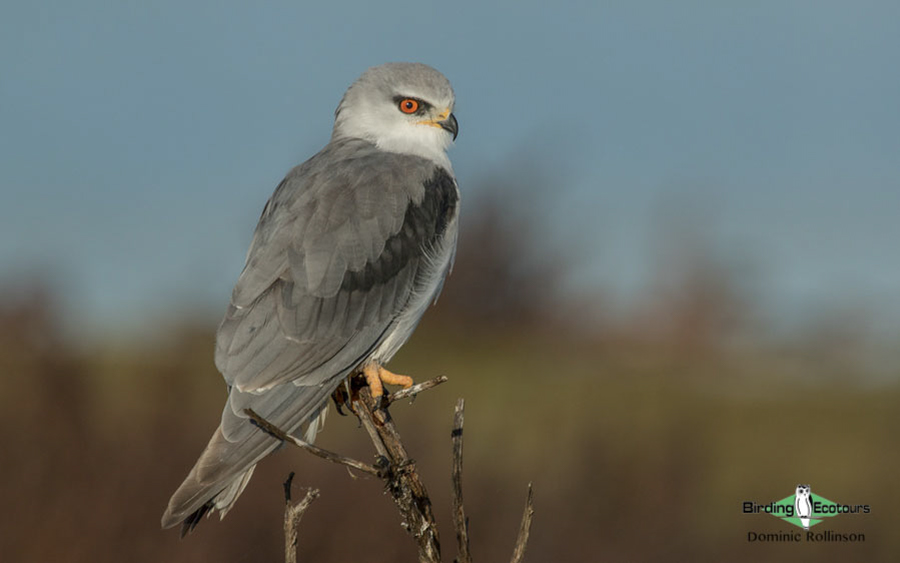
Continental Portugal’s bird list stands at 486 species (following International Ornithological Congress (IOC) v13.1 taxonomy, as of July 2023), a high total for such a small country, and its variety of habitats, climates, ecosystems, as well as its small size make it a fantastic country to go birding in, and our Portugal birding tour gives you the chance to enjoy some iconic Iberian species.
We are delighted to offer this Portugal birdwatching tour at a more relaxed pace than our more typical birding tours (such as our intensive Spain birding tour), by combining the fabulous birding with visits to some of Portugal’s best vineyards and cultural highlights. With wine tasting taking place almost every couple of days, and several cultural and geographical highlights to enjoy, we feel this tour has something to offer everyone, from the dedicated birder to the more casual visitor. It is also a great tour for a group of friends who might like somewhere to travel together!
We begin our Portugal birding tour in the beautiful city of Porto, from here we will head straight into the picturesque Douro River Valley, east of the city, for our first look at rural Portugal and its wonderful vineyards. While in the area we will enjoy not only vineyards but also beautiful scenery from several viewpoints, and we will also get to grips with mountain birding with species such as Griffon Vulture, Blue Rock Thrush, Iberian Grey Shrike, White-throated Dipper, and Black Wheatear all among some of our first targets.
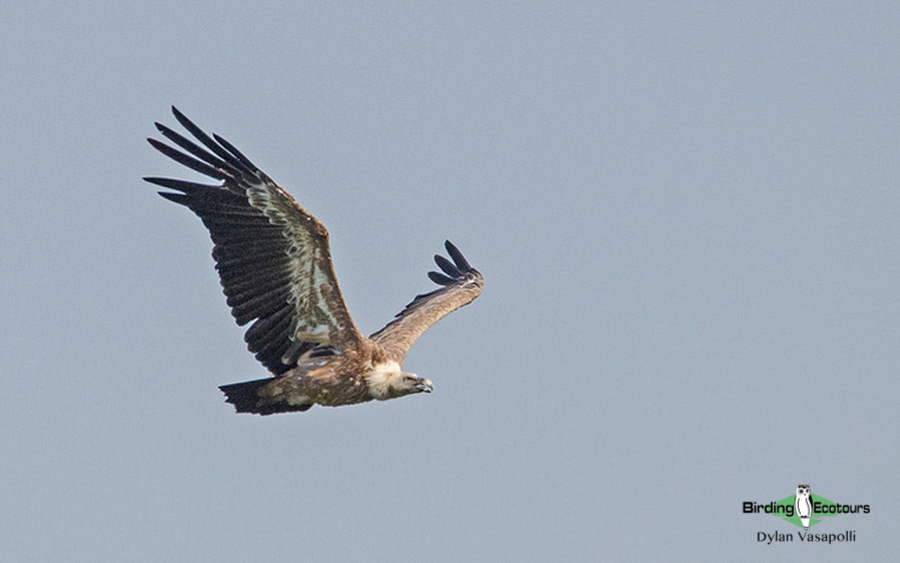
From here we will slowly meander our way south through the country’s interior, observing how the habitat changes from lush river valleys to drier landscapes more like those of neighboring Spain. Along the way we will take in the beautiful town of Marvão before we reach the plains of the central regions of southern Portugal. It is this area that will hold some of Portugal’s really special species, with Spanish Imperial Eagle, Great Bustard, Iberian Magpie, and Black-bellied Sandgrouse all possible in this region, along with a whole host of other plains species.
We will then continue south to the Algarve, a beautiful coastline and famous among birders and non-birders alike. Here we will enjoy yet more wine tasting and cultural highlights and the birding will also be exciting, with large numbers of wintering shorebirds (waders) and other migrants present at a variety of different locations. We will also visit Portugal’s extreme southern corner and look across the vast Atlantic Ocean to see what might be passing Cape St Vincent, with highlights like Great Shearwater and Cory’s Shearwater both possible.
Finally, we will head north to the beautiful city of Lisbon. Here we visit the superb Tagus Estuary, a vitally important area for birds in Western Europe. Highlights here include Little Bustard, Savi’s Warbler, Calandra Lark, Black-winged Kite, and Bonelli’s Eagle, plus tens of thousands of shorebirds (waders) and wildfowl which spend the winter in the estuary. We will also have time to enjoy some of Lisbon’s cultural aspects before our tour concludes.
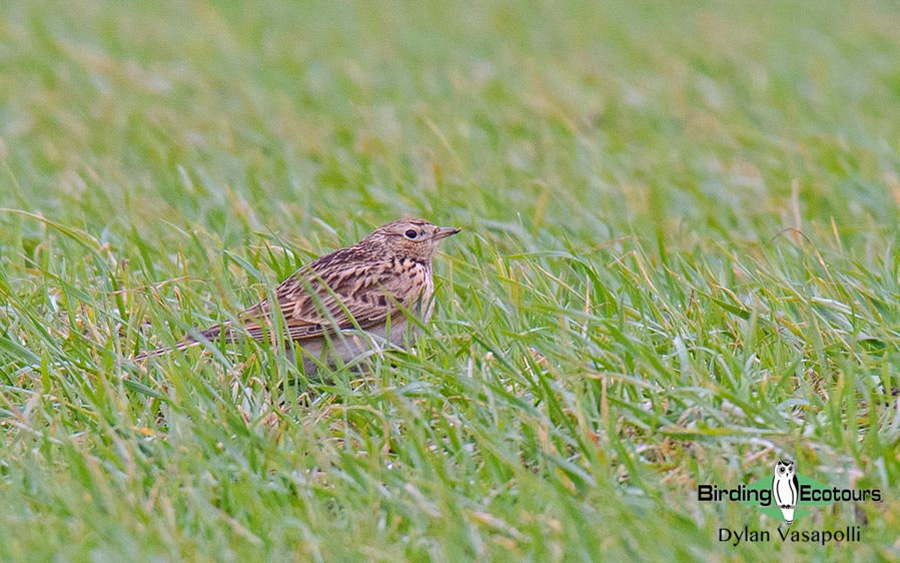
Itinerary (11 days/10 nights)
Day 1. Arrival in Porto, Quinta de Aveleda wine tasting, travel to Figueira de Castelo Rodrigo
Welcome to Portugal! We will meet for lunch together, afterwards we will travel east, to our first stop on the tour; wine tasting at the superb Quinta de Aveleda, just a 30-minute drive from central Porto. This beautiful estate sits in 100 hectares of vineyards and grows Alvarinho, Loureiro, Arinto, and Fernao Pires grapes. The vineyard has been in the same family since 1870 and offers an incredible experience to get this exciting Portugal tour going.
Our accommodation for the first evening offers breathtaking panoramic views of the region. The area also has plenty of great birds, which we will likely see during our stay.
Overnight: Casa da Cisterna, Figueira de Castelo Rodrigo
Day 2. Birding in Douro Valley, Douro Valley wine tasting
We will have a leisurely start today with some birding in the beautiful Douro Valley. The Douro Valley is classically Mediterranean and the area around our hotel features iconic species of the region including Spotless Starling, Black Redstart, Iberian Magpie, Sardinian Warbler, Cirl Bunting, and Rock Bunting.
Our focus for the day will be the area within the Parque Natural do Douro Internacional. We will travel east, right to the border with Spain, a beautiful area with rolling hills around the fertile river valley. Key species we will look for here include Griffon Vulture, Golden Eagle, Peregrine Falcon, Common Kingfisher, Iberian Grey Shrike, Iberian Magpie, Thekla’s Lark, Crested Lark, Eurasian Crag Martin, Black Wheatear, Blue Rock Thrush, Dartford Warbler, White-throated Dipper, European Serin, and Hawfinch.
We will finish the day with wine tasting at the superb Quinta do Vale Meao, a classic Douro Valley vineyard of 98 hectares, with a variety of superb and famed wines, with olive oil to taste too.
Overnight: Casa da Cisterna, Figueira de Castelo Rodrigo
Day 3. Transfer to the Alentejo (via Marvão)
Today we will make the journey south through the heartland of Portugal. We will break up the journey by visiting the ancient town of Marvão, a location featured in ‘1,000 Places to See Before You Die’, a New York Times best seller. We will then continue our journey to Terena, where we will spend the next three nights.
Overnight: Herdade D Pedro, Terena
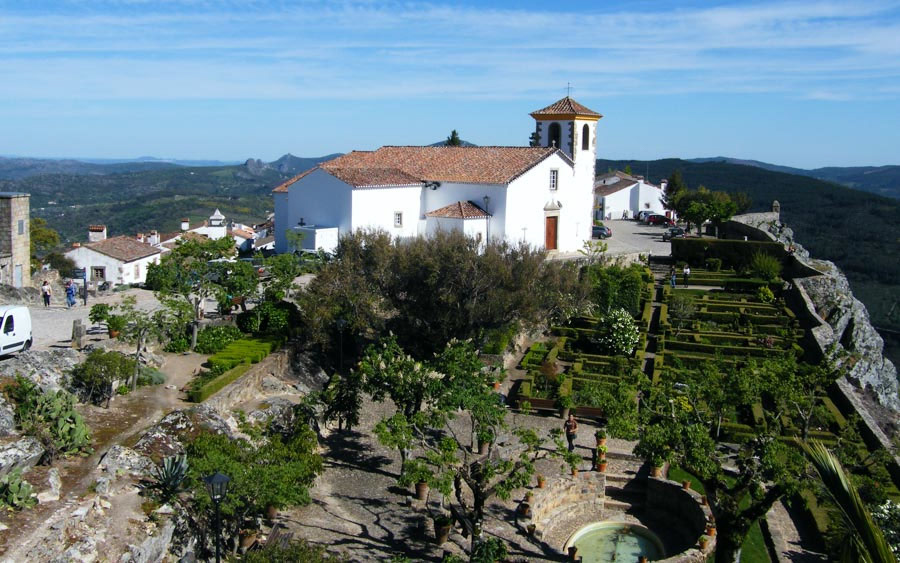
Day 4. Birding Cuba, visit to Évora World Heritage Site
Today we will begin by visiting the special protected area around the village of Cuba. This dry grassland habitat is home to some really special species, including Great Bustard, Little Bustard, Black-bellied Sandgrouse, Red-legged Partridge, Black-winged Kite, Western Marsh Harrier, Eurasian Hoopoe, Iberian Grey Shrike, Iberian Magpie, and Corn Bunting.
Other species of note here include Red Kite, Red-rumped Swallow, Crested Lark, Thekla’s Lark, Eurasian Blackcap, Zitting Cisticola, Northern Wheatear, and Meadow Pipit, while nearby wetlands should give us chances to see Northern Shoveler, Red-crested Pochard, Common Pochard, and White Stork.
In the afternoon we will visit the town of Évora, the town is a UNESCO World Heritage Site, designated for its fantastically preserved Roman ruins. In the Middle Ages, the town reached its golden age as it became the residence of Portuguese kings. We will spend time exploring the town and taking in one of Portugal’s cultural wonders.
Overnight: Herdade D Pedro, Terena
Day 5. Birding Mourão, Herdade do Esporão wine tasting
Today we once again head east towards the Spanish border. We will begin by birding around the town of Mourão. This is an excellent area for raptors (birds of prey) with possible targets including Griffon Vulture, Cinereous Vulture, Black-winged Kite, Red Kite, Common Kestrel, and Common Buzzard all occurring here. Western Barn Owl and Little Owl also occur and we will be sure to keep our eyes peeled for them too.
The dry grassland here gives us another chance of seeing Great Bustard, Little Bustard, and Black-bellied Sandgrouse, as well as other exciting species like Common Crane, Eurasian Hoopoe, Eurasian Crag Martin, Red-rumped Swallow, Calandra Lark, Iberian Magpie, Iberian Grey Shrike, Mistle Thrush, Sardinian Warbler, Spanish Sparrow, European Serin, Corn Bunting, and many others.
In the afternoon we will visit Herdade do Esporão for some more fantastic wine tasting.
Overnight: Herdade D Pedro, Terena
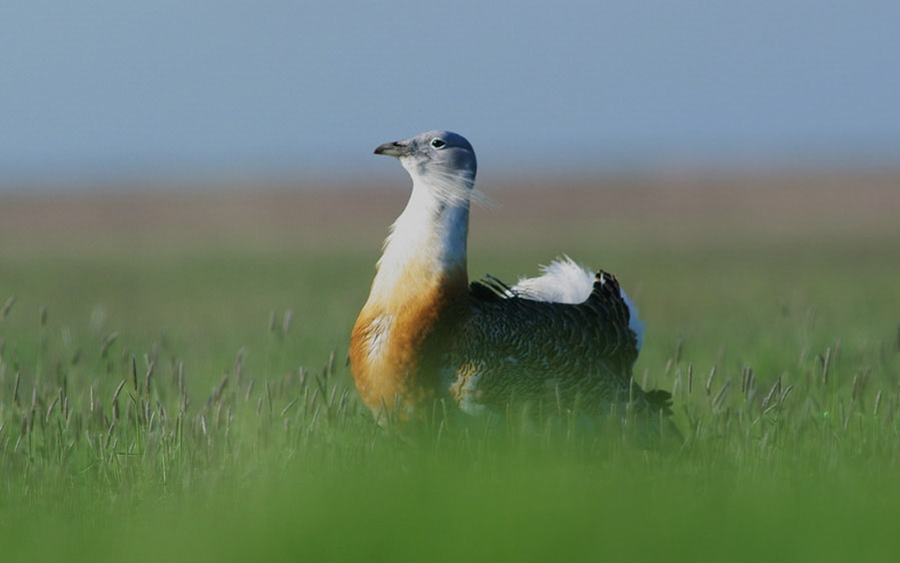
Day 6. Birding at Castro Verde, transfer to Algarve
Today we will visit the area known as Castro Verde. Classic grassland species here are similar to those on previous days, but we also stand a good chance of adding the iconic Bonelli’s Eagle, Golden Eagle, and Spanish Imperial Eagle while in the area. Other species of note here include Black-winged Stilt, Kentish Plover, Eurasian Stone-curlew, Great Egret, Black Stork, Cinereous Vulture, Short-toed Snake Eagle, Hen Harrier, Western Marsh Harrier, Little Owl, Merlin, Common Kestrel, Dartford Warbler, Common Chiffchaff, Whinchat, Spanish Sparrow, Eurasian Tree Sparrow, and Western Yellow Wagtail.
In the afternoon we will transfer to Alte on the Algarve, our base for the next three nights.
Overnight: Alte Hotel, Alte
Day 7. Birding Ria Formosa Natural Park and Castro Marim
Today we will visit the Ria Formosa Natural Park (this site is also identified as an Important Bird Area by BirdLife International and is a Ramsar site – a wetland of international importance). This fantastic coastal area is one of Portugal’s most productive birding spots and the species list here is vast.
The following interesting species are possible: Booted Eagle, Black-winged Kite, European Nightjar, European Bee-eater, Iberian Green Woodpecker, Lesser Spotted Woodpecker, Iberian Magpie, Woodchat Shrike, Bluethroat, Western Subalpine Warbler, Melodious Warbler, Eurasian Penduline Tit, and Rock Sparrow.
Today we will also take a boat trip around a section of the park to get us closer to the wonderful wetland birds found here, which include Red-crested Pochard, Ferruginous Duck, Eurasian Spoonbill, Little Bittern, Purple Heron, Squacco Heron, Western Swamphen, Audouin’s Gull, Slender-billed Gull, Yellow-legged Gull, and many others.
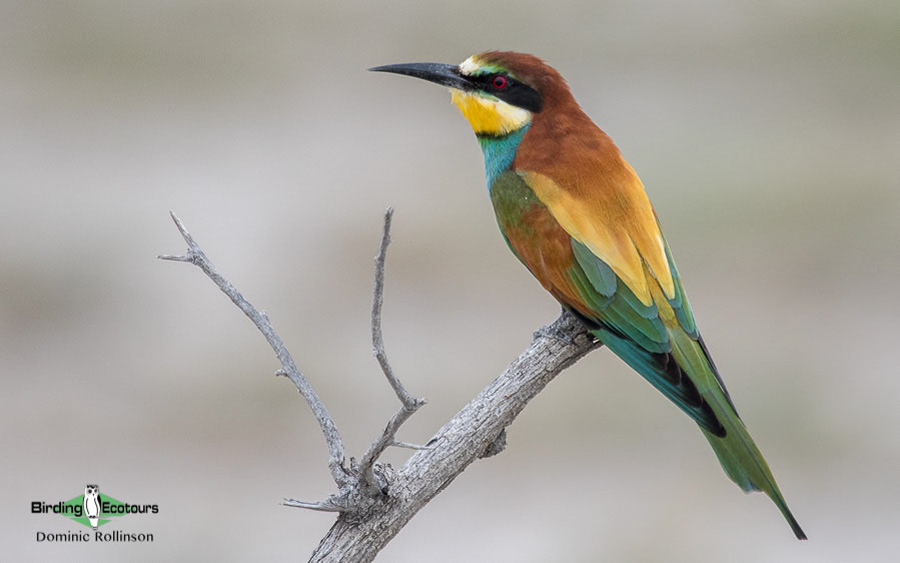
In the afternoon we will visit the vast saltpans near Castro Marim. This is a mecca for shorebirds (waders) with beautiful species like Pied Avocet, Bar-tailed Godwit, Spotted Redshank, Grey Plover, Common Greenshank, and Kentish Plover being the main highlights. Other species of note here include Greater Flamingo, Eurasian Spoonbill, Slender-billed Gull, Mediterranean Gull, Common Kingfisher, Mediterranean Short-toed Lark, Bluethroat, Western Subalpine Warbler, Spectacled Warbler, and Tawny Pipit.
Overnight: Alte Hotel, Alte
Day 8. Birding Sagres and Cape St Vincent, visit to Fortaleza de Sagres, Monte da Casteleja wine tasting
Today we will travel west along the Algarve to Portugal’s southwestern corner. Our first stop will be the open areas inland of Sagres where we will visit a well-known raptor (birds of prey) watchpoint. Here we will hope to come across many of our target species including Griffon Vulture, Bonelli’s Eagle, Egyptian Vulture, and Booted Eagle. The area is also usually busy with many other species and is a real migrant hotspot, so we can expect a great range of species here.
We will then make the short journey to Cape St Vincent, a beautiful location and excellent for seabirds. Top species like Cory’s Shearwater and Great Shearwater can be close to shore and if conditions are favorable, we may even be able to see the Critically Endangered (BirdLife International) Balearic Shearwater. Many migrants can also be found in the scrubby habitat here during the fall, such as Ring Ouzel, Common Blackbird, European Robin, Willow Warbler, Common Chiffchaff, and Eurasian Siskin.
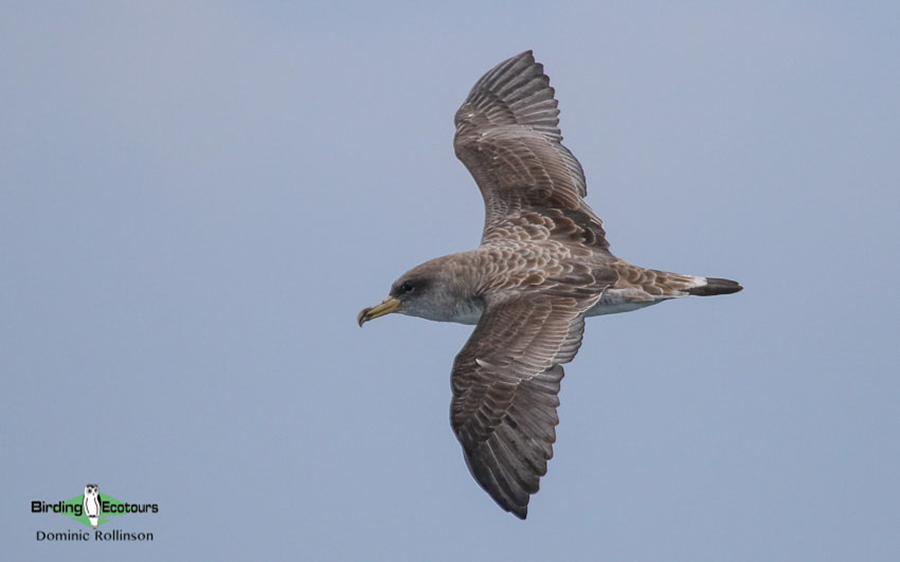
After the morning’s birding session we will head to the nearby town of Sagres, where we will have lunch and explore the fascinating Sagres Fortress, a stunning headland area where we can combine culture, history, and some birding (at this time of year the joy of visible migration is very much in evidence and looking to the sky is often rewarding!). Later in the afternoon we will visit Monte da Casteleja for wine tasting of traditional Algarve wine. The grapes for this wine are grown using responsible organic agricultural techniques, which works directly with the environment.
Overnight: Alte Hotel, Alte
Day 9. Birding Lagoa dos Salgados, transfer to Lisbon, Companhia das Lezírias wine tasting
Today we will be birding in the central Algarve, at the bird rich Lagoa dos Salgados. This is another excellent area for relaxed birdwatching and should hold many migrants during our visit, as well as numerous interesting resident species. Species of interest here include Ferruginous Duck, Eurasian Spoonbill, Little Bittern, Black-winged Kite, Mediterranean Gull, Audouin’s Gull, Slender-billed Gull, Iberian Magpie, Bluethroat, Eurasian Penduline Tit, and many others.
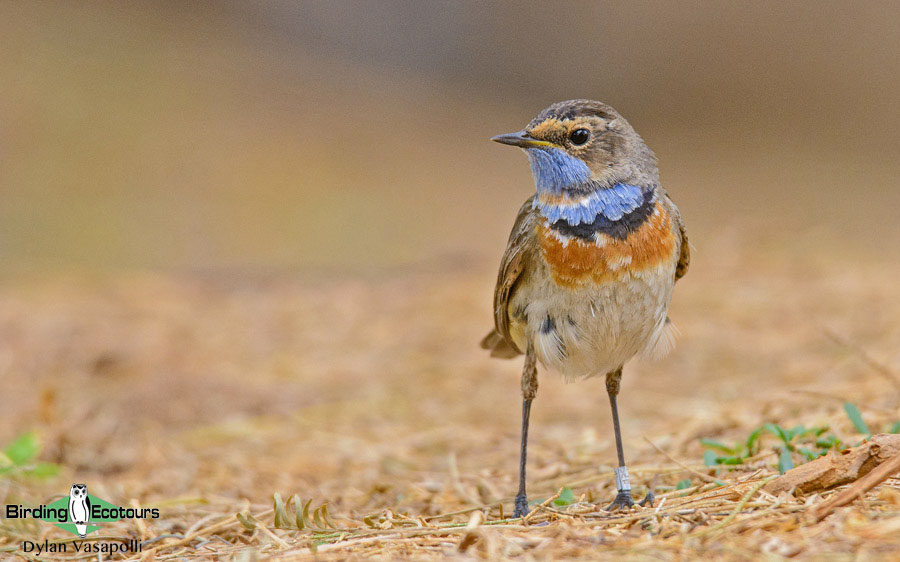
In the afternoon we will head north towards Lisbon. This will see us arrive in good time at Companhia das Lezírias, our final vineyard visit of the tour. This vineyard is known for the Tyto Alba wine, a biological wine, named after the Western Barn Owl. This bird is extremely abundant on the property, and all steps are taken to assure they thrive here. After our wine tasting session, we will head into Lisbon itself and to our hotel for the final two nights of the tour.
Overnight: Praia do Sal Resort, Lisbon
Day 10. Birding Tagus Estuary, Fado in the evening
The final full day of our Portugal birding tour will be spent exploring the superb Tagus Estuary on the outskirts of Lisbon. This is one of Europe’s premier birding locations and a must-visit for any Portuguese tour. Not only is it the largest estuary in western Europe, but it is also a staging area for hundreds of thousands of wintering and migrating wildfowl and shorebirds (waders).
The list of the more common species found here is vast but some of the highlights of the area include Little Bustard, Glossy Ibis, Greater Flamingo, Black-winged Stilt, Pied Avocet, Marsh Sandpiper, Curlew Sandpiper, Black-winged Kite, Montagu’s Harrier, Bonelli’s Eagle, Long-eared Owl, White-winged Tern, Savi’s Warbler, Dartford Warbler, Iberian Magpie, Calandra Lark, European Stonechat, Eurasian Penduline Tit, Short-toed Treecreeper, Spotless Starling, Common Waxbill, and so much more.
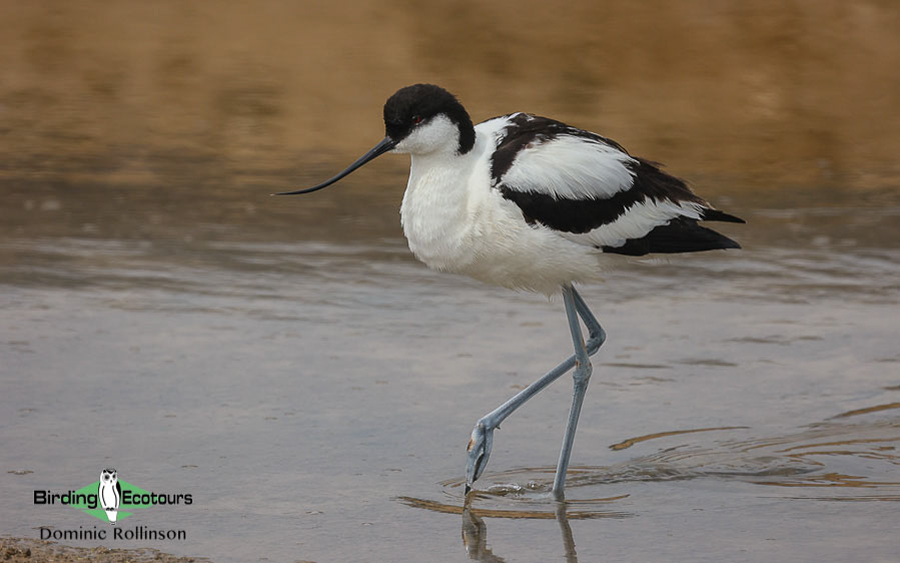
After a leisurely day exploring the Tagus Estuary, we will return to Lisbon for a final group dinner. Here we will experience the traditional Fado of Lisbon, which provides a wonderful send-off after what is sure to have been an enjoyable tour through this enchanting country.
Overnight: Praia do Sal Resort, Lisbon
Day 11. Departure from Lisbon airport.
Sadly, it will now be time to depart Portugal from Lisbon Airport. After a final breakfast you will be transferred to the airport for your onward flights.
Overnight: Not included
Please note that the itinerary cannot be guaranteed as it is only a rough guide and can be changed (usually slightly) due to factors such as availability of accommodation, updated information on the state of accommodation, roads, or birding sites, the discretion of the guides and other factors. In addition, we sometimes must use a different international guide from the one advertised due to tour scheduling or reasons beyond our control.
Download ItineraryPortugal: Birding, Wine, and Culture Trip Report
18 – 28 October 2021
DOWNLOAD TRIP REPORT
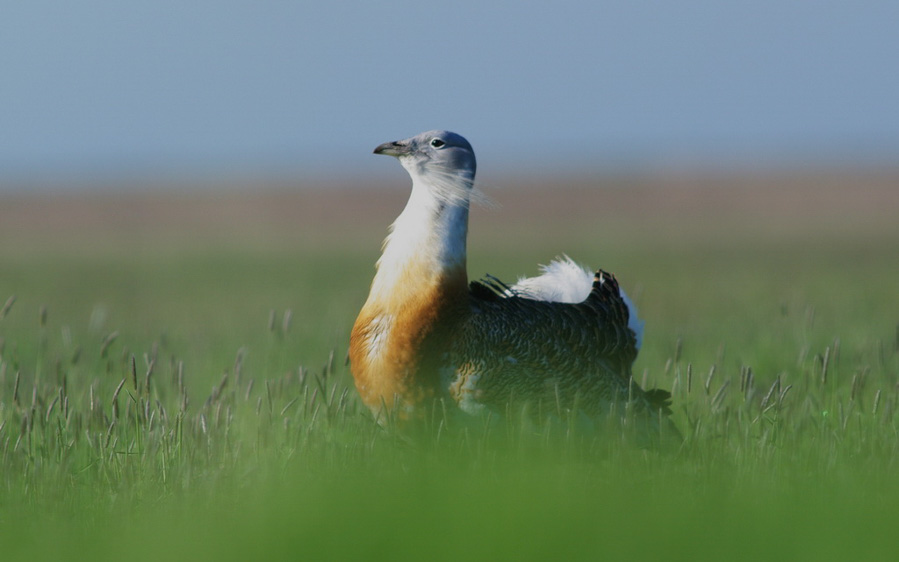
Overview
Our 10-day private tour of Portugal began on the 18th of October 2021, in the ancient city of Porto, and concluded on the 28th of October 2021 in the capital of Lisbon. During the tour we visited many wonderful birding locations including the Douro Valley, Cuba, Mourão, Castro Verde, several sites on the Algarve, and the Tagus Estuary.
This tour was put together as a private adventure for five friends: Urban, Nancy, Sandra, John, and Judy, and is based on our new Portugal set departure tour of the same name where we focus on the birds of the region along with several wine tasting sessions and cultural site visits. We run this tour in partnership with Sociedade Portuguesa para o Estudo das Aves (SPEA) (Portuguese Society for the Study of Birds), BirdLife International’s partner in Portugal, and we are pleased to work with this valuable bird conservation Non-Governmental Organization (NGO). I would like to extend a personal thanks to Lara of SPEA for all her hard work in making this tour the great success it was.
Our trip around this beautiful country gave us many exciting species, including Great Bustard, Spanish Imperial Eagle, Bonelli’s Eagle, Black-bellied Sandgrouse, Audouin’s Gull, Black Stork, Griffon Vulture, Iberian Grey Shrike, Iberian Magpie, Calandra Lark, Bluethroat, and Ferruginous Duck.
A total of 145 bird species were recorded during the tour (three of these were “heard only”), along with a few other interesting animals, including European Pond Turtle, Granada (Iberian) Hare, European Rabbit, Red Fox, and European Fiddler Crab. Species lists are at the end of this report. We enjoyed wine tasting at five gorgeous vineyards, visited numerous impressive cultural sites, and soaked in some staggering landscapes.
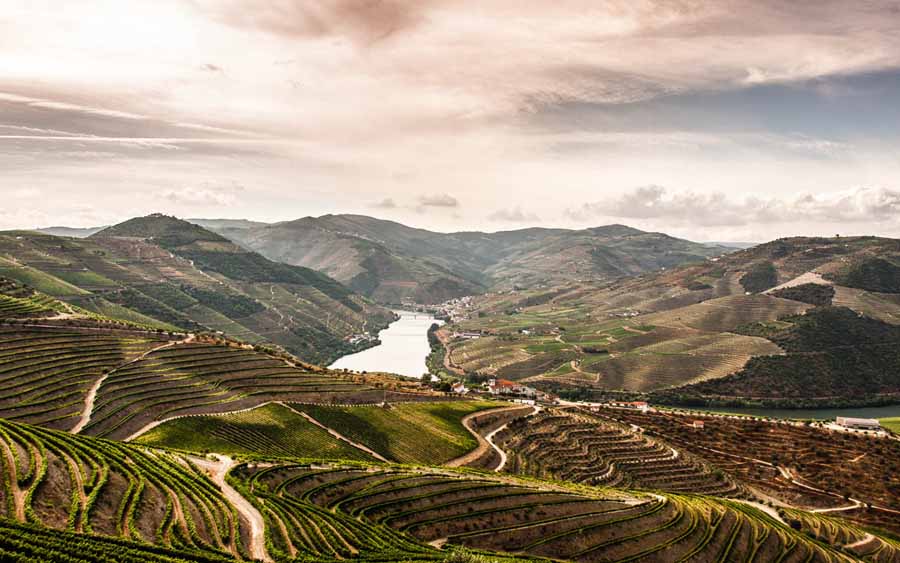
Detailed Report
Day 1, 18th October 2021. Arrival in Porto, Quinta de Aveleda wine tasting, travel to Pinhão
We began our tour with a visit to the central park in Porto. As well as many common birds this site has very recently become well known as the only location in mainland Europe to find Plain Swift, a recent colonist. Unfortunately, our visit did not coincide with them being present in the park, but this disappointment was softened by several other wonderful urban species.
Our short walk around this urban green space gave us Egyptian Goose, Mallard, Common Wood Pigeon, Common Moorhen, Eurasian Coot, Little Grebe, around 35 Yellow-legged Gulls of various ages, Great Cormorant, Eurasian Jay, Eurasian Magpie, Coal Tit, Great Tit, Common Firecrest, Goldcrest, Eurasian Wren, a briefly heard Short-toed Treecreeper, Common Blackbird, Spotted Flycatcher, European Robin, and European Pied Flycatcher.
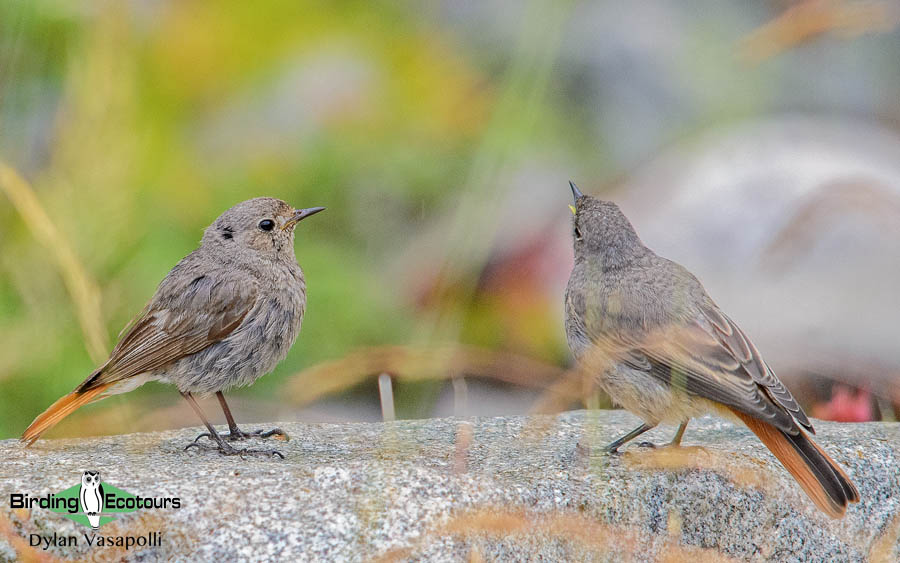
After lunch in Porto, we drove out of the city to the delightful Quinta de Aveleda vineyard, originally founded in the 17th century. This ancient vineyard specializes in the finest wines of the Douro Valley, and we enjoyed tasting their own wines and enjoyed a tour of the wine making facilities. In the beautiful gardens we managed to squeeze in some light birding around some fantastic wine tasting. Here we were able to hear the endemic Iberian Green Woodpecker, a stunning and vocal species but often elusive. We had good views of Black Redstart, brief views of Eurasian Blue Tit and Short-toed Treecreeper, heard Eurasian Nuthatch, and witnessed the interesting behavior of Spotless Starling hawking for insects over the gardens.
After our wine tasting session, we continued along the Douro Valley to our hotel near Pinhão, the beautiful Quinta de Ventozelo. During the drive to the hotel, we saw large numbers of Great Cormorant along the river, and upon arriving at the hotel we got to witness a show of around 30 White Wagtails coming to roost in the hotel grounds. A brief Blue Rock Thrush on the hotel buildings and European Greenfinch in the vineyards unfortunately did not stick around for more prolonged views, but we would have plenty of further opportunities for both during coming days.
Day 2, 19th October 2021. Birding in Douro Valley and Douro Valley wine tasting
Today we took the mountain roads east to the border with Spain as we explored the Douro Valley. However, the day started with thick and unseasonal fog. In this early gloom some of the group heard the distant song of a Eurasian Golden Oriole in the valley below. This was a very unexpected but welcome surprise, given the time of the year. Around the hotel we were able to record Sardinian Warbler, Spotless Starling, Common Blackbird, European Robin, Black Redstart, Eurasian Tree Sparrow, House Sparrow, White Wagtail, and European Goldfinch.
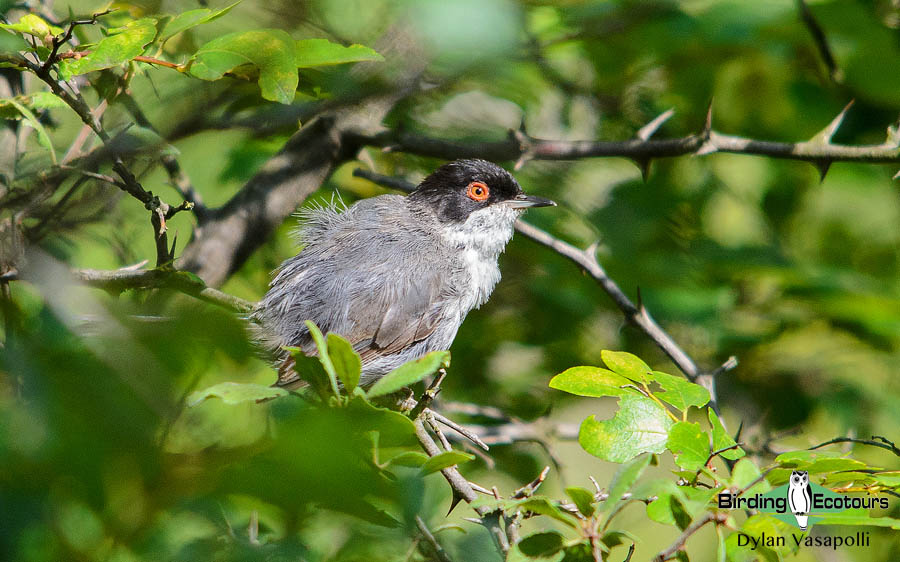
After breakfast we drove east in the gloom, with the sun slowly began to break through as we arrived at our first birding stop. This unassuming area in the mountains was an excellent mix of scrub habitat, rocky outcrops, and gravel tracks. It wasn’t long before we heard our first Sardinian Warbler, European Serin, European Goldfinch, and European Robin. A female European Stonechat gave brief views on overhead wires and in the distance, we got our first good look of the tour at Blue Rock Thrush, although more distant than we would have liked. By the river itself we had Eurasian Wren, another Sardinian Warbler, and over the river a Great Cormorant flew by. The highlight of this brief stop though, was a stunning Red Kite, which soared overhead and gave the whole group breathtaking views.
Returning to the van we continued along the road to a well-known spot for Black Wheatear, sadly on this occasion we could not locate them here, however further up the valley we enjoyed brief views of the beautiful Iberian Magpie, as a large flock was coming down to the river to drink before quickly moving on and out of view. Along the river valley we also saw Common Kingfisher, Common Buzzard, Black Redstart, and Common Kestrel.
Continuing our drive east we passed through the small village of Maçores. Here we found a colony of Eurasian Crag Martin, which gave excellent views. Continuing east we reached the border with Spain again and stopped for lunch at Miradouro de Penedo Durão. This incredible viewpoint enabled us to get close views of Griffon Vultures, with flight views from below and above achieved along with fantastic views of them perched on rocks in the valley below. Our only Peregrine Falcon of the tour gave a wonderful flyby while we were having lunch too, a nice bonus during our stop here.
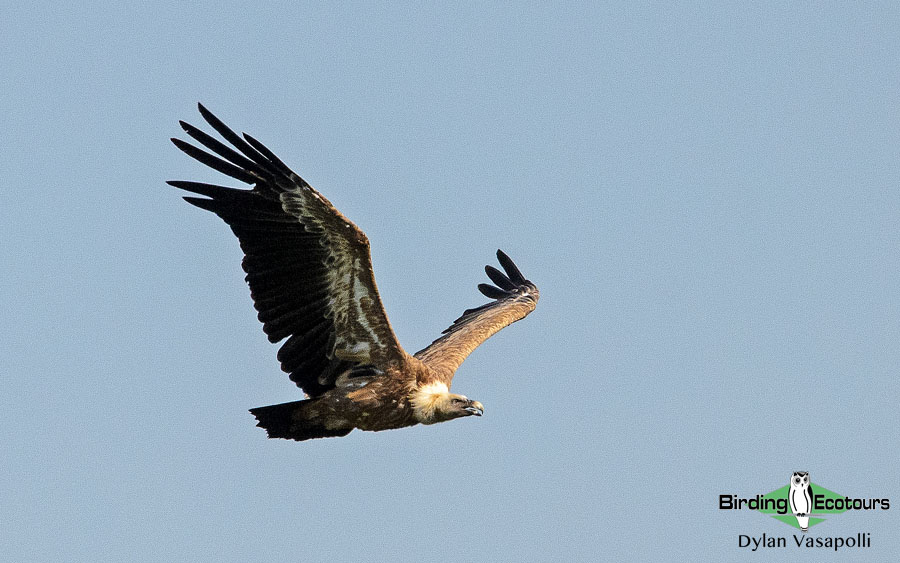
After lunch we returned through the Douro Valley to our second vineyard visit of the tour at Quinta do Vale Meao. Before reaching the vineyard, we enjoyed amazing views of Woodlark foraging in the middle of a small country road. They carried on feeding despite our van being only a few meters away. At the vineyard we explored the entire area in a Land Rover, including some land outside the border of the vineyard, and learnt a lot about the history, ecology, and geography of the area. We then sampled some fantastic wines and learnt about the wine making process here.
A few birds gave themselves up while around the vineyard with Red-legged Partridge and a singing Thekla’s Lark enjoyed by some of the group. After a long and hot day, we returned to our hotel. Along the route back we had brief views by the roadside of Red Fox and Western Barn Owl, which flashed in front of the van as we made our way through the mountains.
Day 3, 20th October 2021. Transfer Pinhão to Alvito (via Marvão)
Today was primarily set aside as a travel day from the northeast corner of Portugal to the southern regions along the Spanish border. As such there wasn’t much birding undertaken, but we did manage to squeeze some in.
A short stop at Rio Mondego-Ratoeira, a gorgeous section of river, gave us White Wagtail, Grey Wagtail, Common Waxbill, great views of three Common Buzzards, Little Grebe, Mallard, Grey Heron, Eurasian Magpie, Western Jackdaw, and Carrion Crow. Shortly before the river we again enjoyed wonderful views of Woodlark, this time in flight above the road, their beautiful song a joy for all to hear. While we watched these birds a Eurasian Sparrowhawk was seen briefly among the olive groves but disappeared quickly.
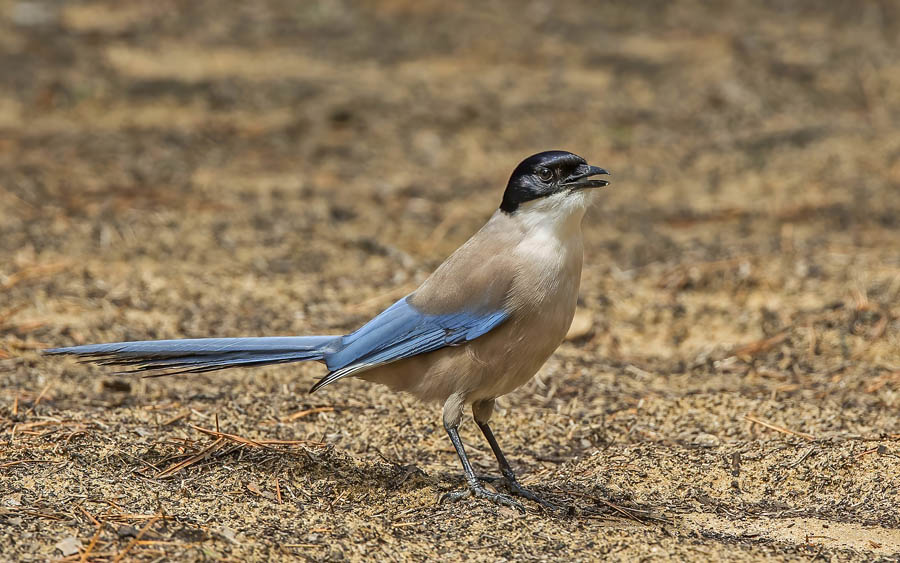
After lunch we continued south near the Spanish border, towards the ancient town of Marvão. While driving along a narrow country road our attention was taken by a couple of Iberian Magpies which flew into trees by the side of the road. We pulled over and took up a position behind a large gate and investigated the dense olive groves in front of us. This was a great decision as 24 Iberian Magpies moved through the undergrowth, giving amazing views to the entire group. The presence of flowing water attracted other species too, including Song Thrush, European Robin, and Eurasian Tree Sparrow. Nearby an Iberian Grey Shrike perched atop wires while European Stonechat and Meadow Pipit were also seen in the area.
After this incredible spectacle we continued our drive and had yet another sight to behold. Entering open grassland, we saw a couple of Griffon Vultures landing on a large rocky outcrop. It became clear that there were 36 of these magnificent birds perched on top of this outcrop, with more joining all the time. It was unclear whether there had been a carcass recently, but it was incredible to watch them sunning themselves, fighting for space, and preening.
The stunning and ancient town of Marvão gave some of the most spectacular views of the trip and gave us some quality birds too. Three more Griffon Vultures were seen over the town, while among the houses Black Redstart and Blue Rock Thrush gave prolonged views. In pine trees beside the town, we enjoyed wonderful views of a singing Cirl Bunting, our first of the tour. Also here were Common Chaffinch, Short-toed Treecreeper, Eurasian Tree Sparrow, and Eurasian Crag Martin.
As the sun was setting, we had our final spectacle of the day with a group of 19 Glossy Ibis flying over the van as we approached our hotel for the next three nights. An enjoyable end to a long day.
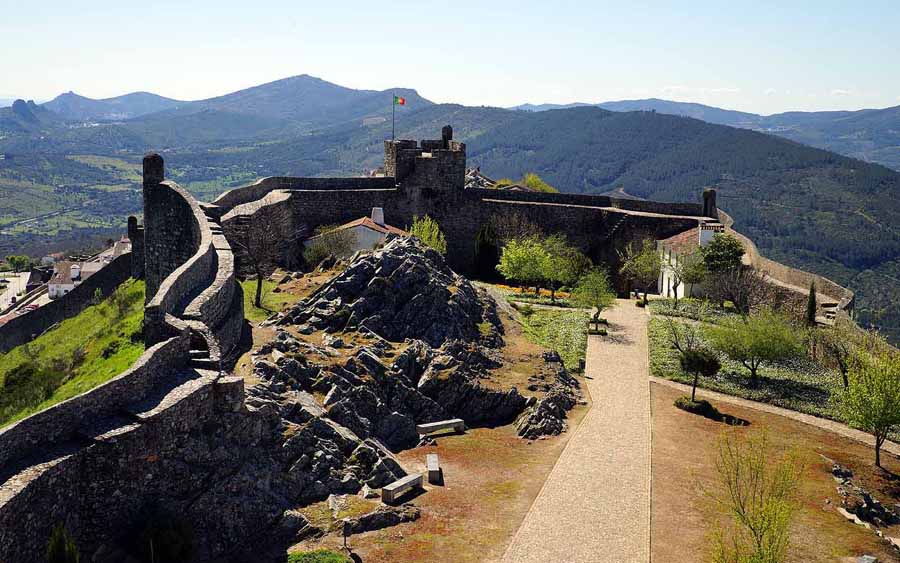
Day 4, 21st October 2021. Herdade do Esporão wine tasting and visit to Évora World Heritage Site
After yesterday’s long journey we decided to take a break today and have a late start. Even so the number of birds around our hotel was a joy to behold and we quickly managed to see Crested Lark, Black Redstart, and Common Chaffinch just outside our rooms. Also in and around the grounds were species such as Eurasian Hoopoe, Iberian Magpie, Common Raven, Common Chiffchaff, Eurasian Blue Tit, Eurasian Blackcap, Sardinian Warbler, Song Thrush, European Robin, and Corn Bunting.
After breakfast we took a short drive to the Herdade do Esporão vineyard where we enjoyed yet another excellent tour and wine tasting session. Behind the vineyard was a large lake and we observed many bird species here and in the surrounding vineyards, including Gadwall, Little Grebe, Great Crested Grebe, Northern Lapwing, Black-headed Gull, Lesser Black-backed Gull, Great Cormorant, Grey Heron, Western Cattle Egret, a flock of 35 Eurasian Spoonbill, Western Marsh Harrier, Red Kite, Common Buzzard, Eurasian Hoopoe, Iberian Grey Shrike, Eurasian Magpie, Crested Lark, and European Stonechat.
After lunch at our hotel, where we enjoyed yet more looks at Crested Lark and Black Redstart, we took a short drive to the wonderful city of Évora. Climbing through its winding streets we visited the world famous “Chapel of Bones”, a chapel with 5,000 human skulls and bones lining the walls. Continuing up we reached the Évora Roman Temple, built in the 1st century AD in honor of Emperor Augustus.
After exploring the city, and seeing Western Jackdaws above the narrow streets, we headed back to our hotel as the sun was going down and we witnessed a beautiful sunset.
Day 5, 22nd October 2021. Birding Mourão and the Spanish borderlands
After a leisurely day yesterday, it was time to resume birding and go after some big targets. Our first stop was the area around Ferrarias. This open grassland was both beautiful and interesting in equal measure and as soon as we stopped the van, we had good views of a group of seven Red-legged Partridge feeding under some trees in one of the fields. It wasn’t long before our first big target fell, as a group of five Black-bellied Sandgrouse flew past us, albeit at some distance. The exciting action continued, as shortly after two pairs of Common Crane flew over us, a really big target bird for many of the group.
We enjoyed yet another interesting observation of two Booted Eagle at middle distance over the fields in front of us, both birds were of the trickier to identify (and less often seen) dark phase. Other birds around our position here included Eurasian Hoopoe, Iberian Grey Shrike, Great Tit, Eurasian Crag Martin, Black Redstart, and Meadow Pipit.
Our next stop was a small pond by the roadside. While at first it didn’t look like much, it was soon apparent that it was teaming with waterbirds. Around the perimeter of the pond we found Egyptian Goose, Northern Lapwing, Common Ringed Plover, Common Snipe, Common Sandpiper, Spotted Redshank, Common Greenshank, Black-headed Gull, Lesser Black-backed Gull, Great Cormorant, Western Cattle Egret, and 25 Eurasian Spoonbills. The pond also attracted other species like Eurasian Magpie, Spotless Starling, Common Blackbird, European Goldfinch, and Corn Bunting. Bird of prey highlights included a stunning juvenile Hen Harrier and yet more Red Kites!
Our next stop took us briefly out of Portugal and into neighboring Spain and the region of Extremadura for a few hours. The barren steppes that lay ahead held some wonderful species. A stop by another remote pond gave us great views of a female Northern Wheatear. The pond itself held Northern Lapwing, Little Ringed Plover, Black-headed Gull, Lesser Black-backed Gull, Great Cormorant, and Grey Heron. In the adjacent fields we managed to pick up a flock of Calandra Lark, plus smaller numbers of Thekla’s Lark and Crested Lark. The best was yet to come though, as two Black-bellied Sandgrouse flew past us at close range, showing off their distinctive flight shape and beautiful coloring.
After our brief foray into Spain, it was time to return to Portugal. While driving we picked up a Great Egret at distance before reaching our next stop. As evening approached, we pulled into a farm track overlooking a vast grass field. In the distance the sound of Common Crane could be heard, and it wasn’t long before 60 birds came down to roost on the hillside, giving lovely views in the evening sun. Shortly after, we were able to enjoy wonderful views of four Black-winged Kite. Despite being distant we had good views of them hunting as the sun set. Also present here were Northern Lapwing, Common Kestrel, Iberian Grey Shrike, Eurasian Skylark (singing distantly), Crested Lark, White Wagtail, Meadow Pipit, and Corn Bunting.
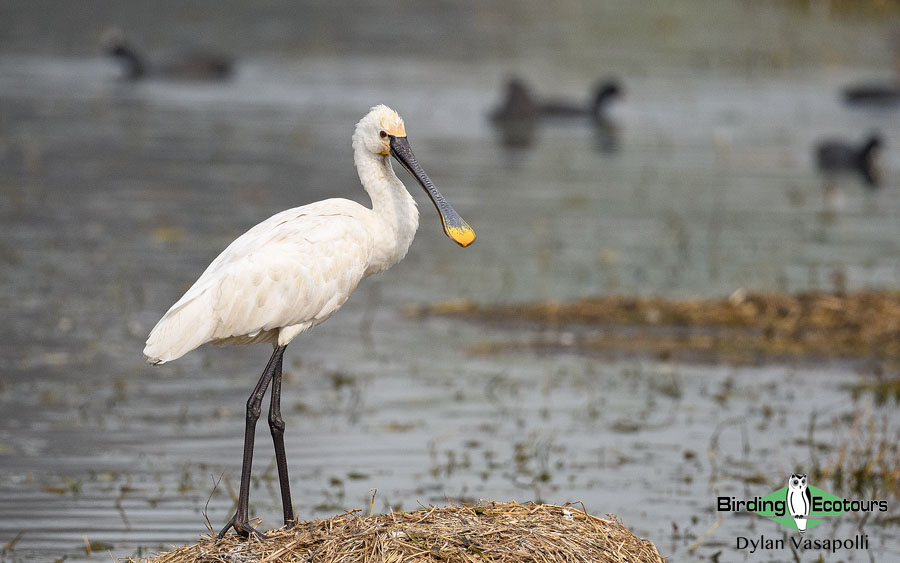
Day 6, 23rd October 2021. Birding at Castro Verde, transfer to Algarve
Today we headed south through central Portugal, further exploring the vast open plains of the interior of the country. The heat of the day quickly made looking at distance particularly challenging as we searched for the special species of this area. However, our first stop did reveal a group of twelve Eurasian Stone-curlews, which gave prolonged views. Raptors were also present here with Western Marsh Harrier, numerous Red Kites, and Common Buzzard all recorded, often closely followed by opportunistic Carrion Crows ready to scavenge any leftovers!
Moving on, we checked another area of plains. Here we were very lucky to find four Lesser Kestrel, a late-in-the-season record for this species in Portugal. These were joined by two Eurasian Sparrowhawk, one of which gave stunning views. Far in the distance a small group of Common Crane were present and yet more Red Kites and Common Buzzards patrolled the sky.
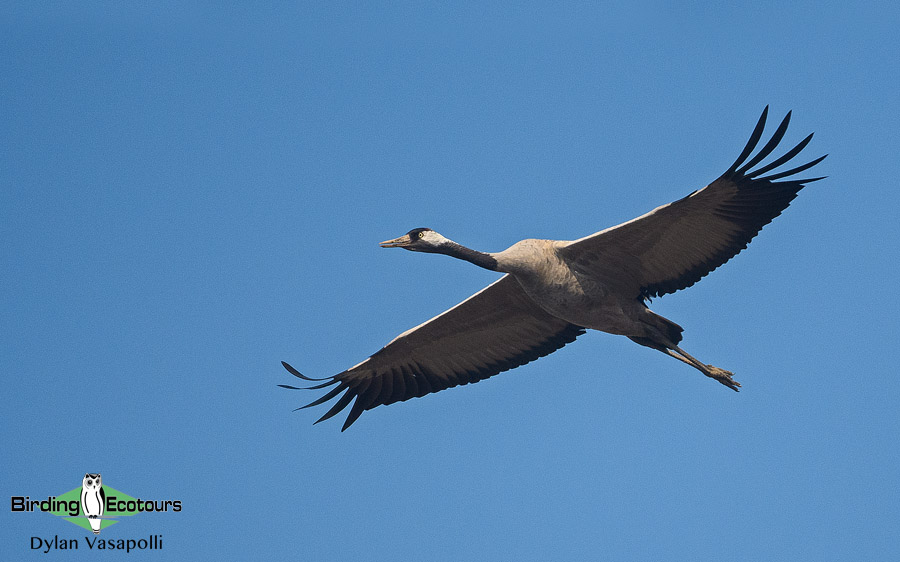
For lunch we decided to visit a hermitage high up on a hill which overlooked the plains. The shade here made for a fantastic spot to escape the heat of the day. After packing our lunch away, we made our way back down the large hill, where shortly after a simply incredible 20-minutes of birding ensued. First, from a field close to the track, a breathtaking flock of eleven Great Bustards took flight, disappearing behind farm buildings close by. The shock of seeing these rare birds so well was soon increased as they appeared again on a nearby mound and gave outstanding prolonged views, a real big target for the whole group was successfully secured! As we watched the bustards, another Northern Wheatear performed well, as did an Iberian Grey Shrike. As the last of the bustards disappeared behind a hill a stunning male Hen Harrier cruised over the field close to our van, giving wonderful views of its ghostly figure.
We decided to change position to see if we could relocate the bustards, but sadly we could not. However, far off in the distance, a familiar shape to our guides soared over the plains below. After a quick double check the call came out, Spanish Imperial Eagle! A small amount of chaos ensued as we tried to get the whole group onto this rare and mystical bird, one by one the group took turns to look through the scope which was locked onto the bird as it soared higher and higher, eventually being lost to view. A truly special moment and a bird that was certainly not on the expected list before the tour began due to the low numbers of this rare species in Portugal.
After these thrilling whirlwind moments it was time to head south to the Algarve. After a long journey we arrived at our hotel on the edge of the Ria Formosa Natural Park. On the approach road we were able to pick out a few waterbirds and shorebirds including Greater Flamingo, Black-winged Stilt, Black-headed Gull, Grey Heron, Little Egret, and Eurasian Spoonbill.
Day 7, 24th October 2021. Birding Ria Formosa Natural Park and Lagoa de Aldeia Nova
Today we started with a wonderful boat trip around the Ria Formosa Natural Park and its many islands. This proved to be a festival of shorebirds and waterbirds, with many species seen and great views had by all. We also learnt some fascinating information about the park, its ecology, and the species that use the area. Shorebirds were in large supply and included Eurasian Oystercatcher, Grey Plover, Common Ringed Plover, Eurasian Whimbrel, Eurasian Curlew, Bar-tailed Godwit, Black-tailed Godwit, Ruddy Turnstone, Red Knot, Sanderling, Dunlin, Common Sandpiper, and Common Redshank. Gulls and terns were also present in good numbers with excellent views of Slender-billed Gull and Mediterranean Gull the highlights, along with Black-headed Gull, Yellow-legged Gull, Lesser Black-backed Gull, and Sandwich Tern all seen too.
The islets around the site were dotted with waterbirds like White Stork, Great Cormorant, Grey Heron, Little Egret, and Eurasian Spoonbill. We also enjoyed the wonderful sight of a large group of Greater Flamingos flying along the coast. Despite the distance their pink sheen was still clear to see. A Western Osprey also put on a fantastic show towards the end of our boat tour.
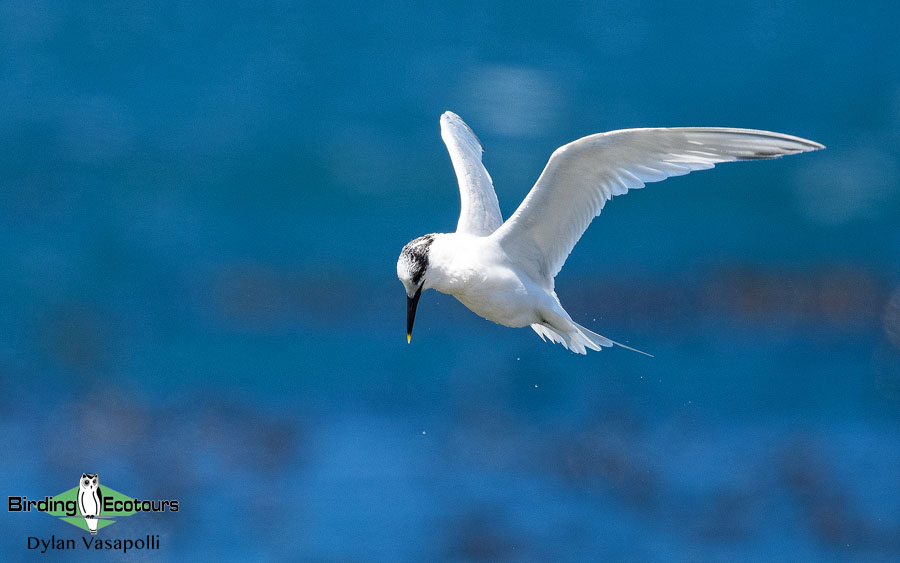
After a delicious lunch in Olhão we headed to the nearby Lagoa de Aldeia Nova. This small lagoon, surrounded by Stone Pine woodland, once present along the whole of the Algarve, was teeming with life and gave us some awesome birding moments. Shortly after entering the woodland the distinctive call of European Crested Tit was heard, allowing good views for the group. Also in the woodland we came across Short-toed Treecreeper, three Common Chiffchaffs, Iberian Magpie, Common Wood Pigeon, Eurasian Jay, Common Blackbird, and Common Waxbill.
We then decided to walk around the lagoon to look for more waterbirds. The highlight here was four immaculate Ferruginous Ducks, a species in significant decline across its European range. Joining these highly sought-after ducks on the lagoon were Mallard, Common Pochard, Common Moorhen, Eurasian Coot, and a raft of Yellow-legged Gulls and Lesser Black-backed Gulls of varying ages. Overhead we enjoyed brief views of a glorious adult Audouin’s Gull. Also over the pool was a solitary Barn Swallow and a small number of Eurasian Crag Martins.
With the sun getting lower in the sky, we retreated towards our hotel. A brief stop at the saltpans near the hotel gave a wonderful spectacle of around 200 Greater Flamingos feeding on one of the pans. These were joined by Sanderling, Mediterranean Gull, Yellow-legged Gull, Eurasian Magpie, European Stonechat, and our first Spanish Sparrow of the tour.
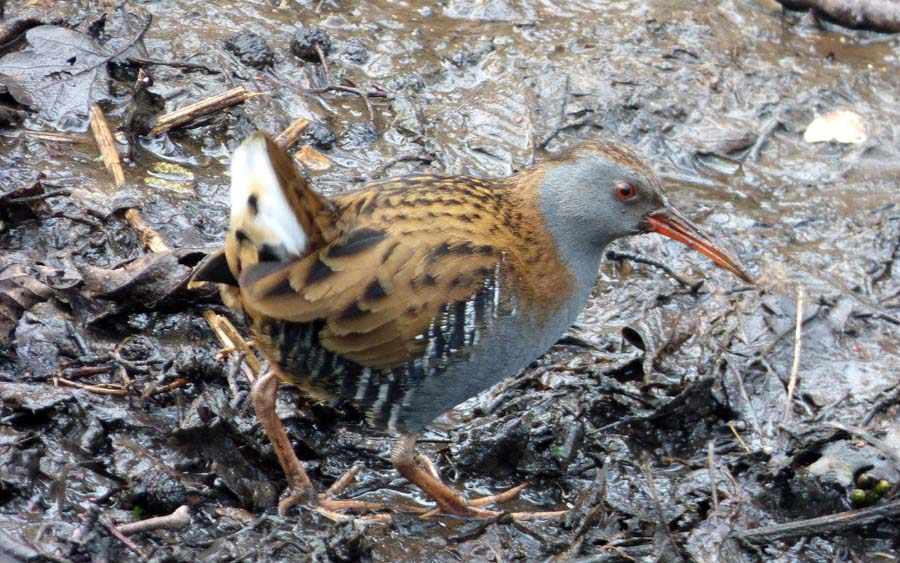
Day 8, 25th October 2021. Birding Ria de Alvor, Sagres, and Cape St Vincent, with Monte da Casteleja wine tasting
Today we explored more of the Algarve and its beautiful coastline. Our first stop was the wetlands around the Ria de Alvor, the nearby estuary forming at the confluence of three rivers. Before reaching the site, we had wonderful views of Eurasian Hoopoe, which fed close to the van as we watched on, it is always a treat to see this highly desired species.
Upon reaching the site we walked along a raised bank, which gave us a good vantage point to spot some of the interesting species of the area. Scanning from here gave us some of the more common species such as Mallard, Common Redshank, Black-headed Gull, Yellow-legged Gull, Great Cormorant, Grey Heron, Eurasian Spoonbill, and Crested Lark.
Some dense vegetation close to the path proved fruitful, with first a couple of Common Chiffchaff moving through, then the skulking shape of a stunning Water Rail hopped across a small gap in the vegetation. This was then joined by a second bird and after some patient waiting, we enjoyed wonderful views of this often-shy species. This area continued to be rewarding as we got to enjoy brief but excellent views of a Bluethroat, another highly prized and often cryptic species.
After a quick scan of the nearby fields and trees, which gave us Meadow Pipit, European Stonechat, European Robin, Sardinian Warbler, and a flyover Iberian Magpie, we left the site to head to our next wine tasting experience at Monte da Casteleja.
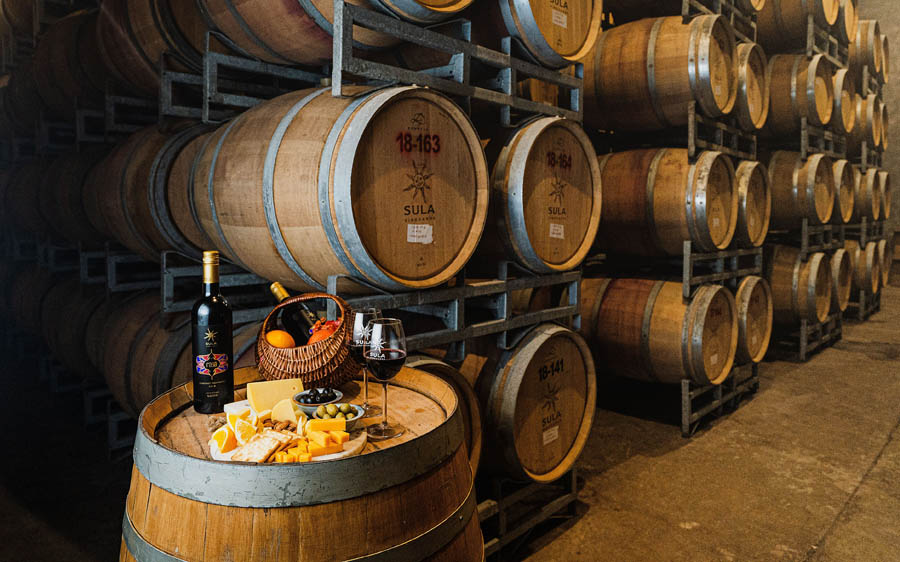
Monte da Casteleja is a small, organic vineyard and has been owned by the same family since 1952, being originally started by the current owner’s grandfather. Wine production only commenced here in 2004, making the vineyards rise into a unique organic experience more impressive. Here we enjoyed lovely wines under the shade of a large veranda and enjoyed a tour of the impressive site and wine making facilities.
After leaving the vineyard we continued west to the extreme southwest point of Portugal, around the town of Sagres. Our first stop was the raptor watchpoint, a high area where raptor counts are undertaken every year during the migration. Our approach to the site was greeted with the amazing view of around 400 Griffon Vultures circling at distance. Despite the distance their huge size was apparent, and we watched the flock move up and down the coast, waiting for an opportune moment to cross the Atlantic towards Africa (next stop Morocco).
At the raptor site itself we once again enjoyed views of the Griffon Vultures, plus other birds of prey including four Booted Eagles, multiple Red Kites and Common Buzzards, and a single fly through by Eurasian Hobby, a pleasant surprise that caught all of us off guard! Around the site a flock of Eurasian Linnets kept us entertained, as did another stunning Northern Wheatear. The final birds here were a beautiful Black Stork, which gave prolonged views as it circled over the watchpoint and a flock of 35 European Golden Plovers which flew over the site just before we departed.
With the afternoon pressing on we decided to head down to Cape St Vincent to see what birds lurked around the cliffs and over the sea. The battering winds here, a favorite for surfers, made birding very challenging. However, we did score a few interesting species, with Yellow-legged Gull, Northern Gannet, Eurasian Crag Martin, and Sardinian Warbler all present. Overhead an adult female Hen Harrier soared over, and brief views were had of a Cory’s Shearwater moving low over the sea. For the first time on the tour the weather got the better of us, and we retreated to the van, making the journey back to our hotel.
Day 9, 26th October 2021. Birding Lagoa dos Salgados, transfer to Lisbon, Casa Ermelinda Freitas wine tasting
Today it was time to leave the Algarve and make our way towards our destination of Lisbon. Before leaving the area, we visited the wonderful Lagoa dos Salgados. This site is one of the most important freshwater lagoons on the Algarve and the number of birds here paid testament to that.
Upon arrival we had excellent views once again of a stunning Northern Wheatear, fast becoming a firm favorite of the tour, and as we walked towards the pool, we got to enjoy the marvel of several hundred Glossy Ibis coming to feed, their distinctive shape clear to see as they tumbled from the sky in typical fashion.
Reaching a small blind (bird hide) next to the pool gave us the perfect position from which to scan the vast body of water. The number of waterbirds and shorebirds on view was remarkable and we got to enjoy many of the species we had seen previously and new species such as Northern Pintail, Western Swamphen (which sadly showed all too briefly), Pied Avocet, and Ruff. We also had great views of Common Kingfisher, Eurasian Teal, Booted Eagle, and Zitting Cisticola.
The highlight species for the group was a stunning Iberian Grey Shrike which posed perfectly for a prolonged period, giving wonderful views of its striking plumage. In total we recorded 49 species around the lagoon in just 90-minutes, a good return, and an excellent location for easy birding.
With the temperature starting to climb we made our way back to the van, reflecting on a great morning of birding. We would now make the drive across Portugal to Lisbon, a stunning drive through mountains, grasslands, Stone Pine forest, and agricultural areas. Along the route we stopped for lunch in the plains town of Castro Verde, where we had been just a few days previously. Opposite the restaurant was a gorgeous wall painting of a Great Bustard, a symbol of the importance of this species to this region of Portugal.
Before we reached Lisbon, we stopped for our final wine tasting of the trip at Adega de Catapereiro. This vineyard is part of a state owned cooperative and an integral part of the local ecosystem. One of their signature wines is called “Tyto Alba”, the scientific name for Western Barn Owl, and we enjoyed this and other wines in the beautiful vineyard shop following a guided tour by the chief wine maker, another thoroughly enjoyable experience.
After a long day we arrived at our final hotel on the outskirts of Lisbon. Here we would meet Domingos, Executive Director of SPEA, who would be with us for the final day of the tour.
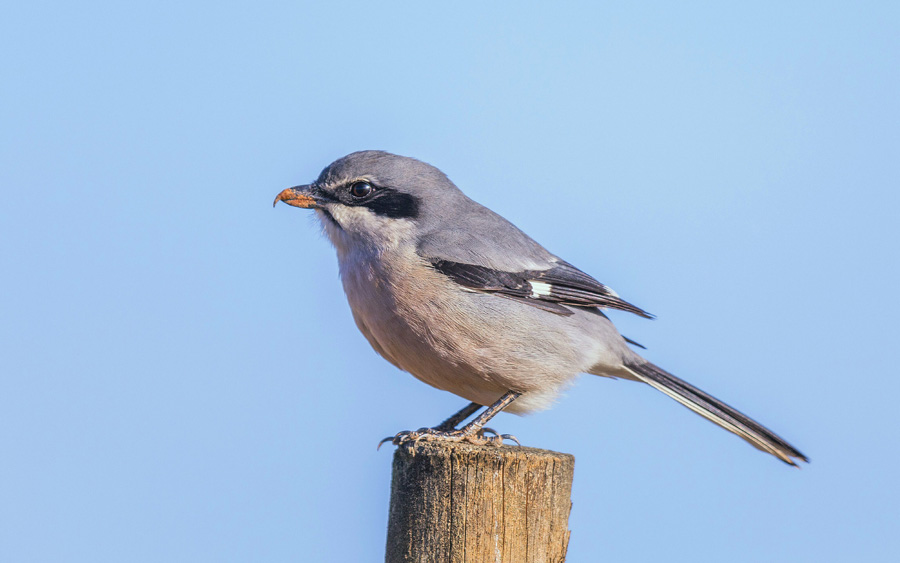
Day 10, 27th October 2021. Birding Tagus Estuary, Fado dancing in the evening
Our final full day in Portugal would see us explore part of the massive Tagus Estuary near Lisbon. The area we focused on is known as Leziria Grande de Vila Franca de Xira, a vast area of rice fields, dry grasslands, tidal floodplain, ditches, and wetlands.
We enjoyed a wonderful few hours in this wetland with large number of species seen. Along the main entrance road, we made periodic stops to investigate the many irrigation channels that crisscrossed the land. Here we observed species such as Green Sandpiper, Common Kingfisher, and Black-winged Kite, plus some interesting introduced species like Yellow-crowned Bishop and Scaly-breasted Munia. Further along the entrance road we stopped to scan for Little Bustard, a species which winters in the area. Sadly, we didn’t find any of this nationally declining species on this occasion but did find two small groups of European Golden Plover, which gave prolonged views at close range.
Continuing through the vast field systems we eventually reached Ponta d’Erva, a small corner of land on the edge of the Sorraia River. From here we scanned the mud banks on both sides of the water for shorebirds and waterbirds. Highlights here included Common Shelduck, Pied Avocet, Common Snipe, Eurasian Spoonbill, and a whole host of other shorebirds, including Northern Lapwing, Common Ringed Plover, Black-tailed Godwit, and Common Sandpiper. In a small creek next to our position, we also got to enjoy prolonged views of a stunning Bluethroat, including seeing it pull a large worm from the mud in a truly fascinating piece of behavior.
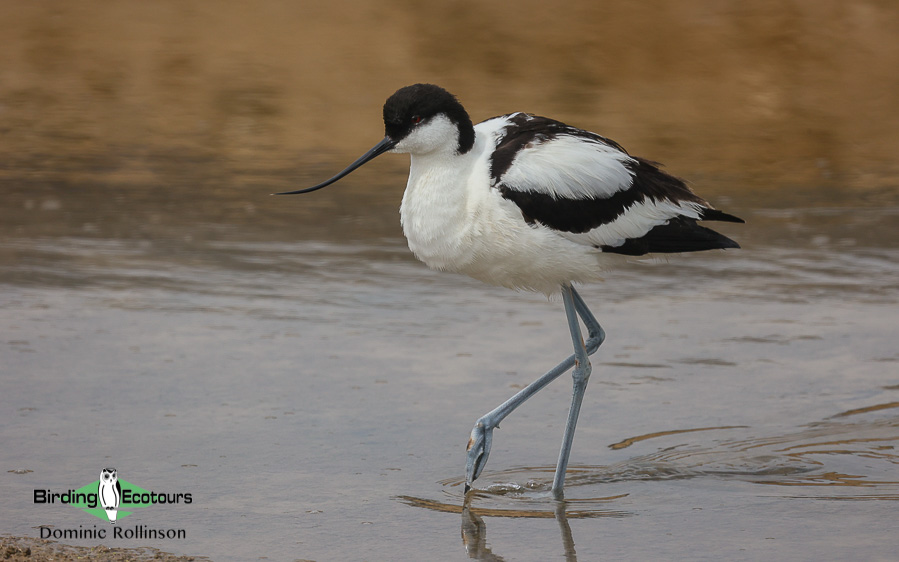
Moving on we headed back into the agricultural areas towards the only real landmark in this open expanse, the stunning Ermida de Nossa Senhora de Alcamé. This attractive church was built for the farm workers of the area and stands proud above the flat scenery surrounding it. Here we would have a picnic lunch in the shade of the church as the day grew hotter. While lunch was generally quiet bird wise things changed as we were leaving. Soaring above us was a stunning pair of Bonelli’s Eagle, a real star bird for the trip. We watched the pair until they moved away and out of view, a truly memorable experience with this magnificent raptor.
After lunch we began the route out of the site. Along the way we enjoyed excellent close views of a female Hen Harrier hunting over the rice fields, more Black-winged Kites, and the stunning sight of around 1,500 Greater Flamingos and White Storks feeding in fields adjacent to the track, a truly magnificent spectacle.
Our final birding stop of the tour would be on the south side of the Tagus Estuary, close to our hotel. Here we scanned the mudflats and enjoyed many of the shorebirds we had previously seen. The highlight species here were two Western Ospreys interacting over the vast mudflats and a stunning Caspian Tern sat close to shore on the mud, our final new bird of the tour.
Shortly after this we said our goodbyes to Sandra, who was taking an early flight the following morning, and the remaining members of the group enjoyed a final meal accompanied by traditional Portuguese Fado dancing, a fantastic way to end a magnificent tour of Portugal. Thank you all!
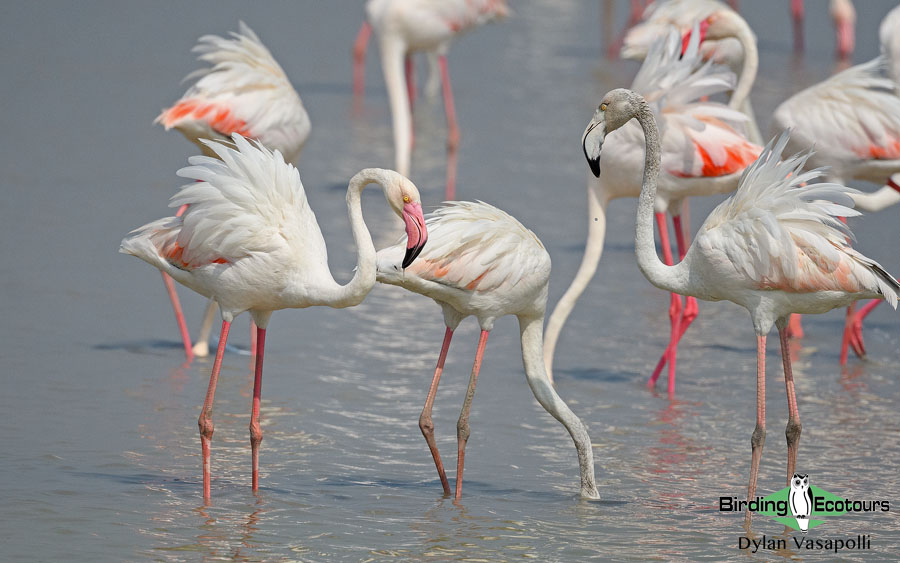
DOWNLOAD TRIP REPORT
Please see the downloadable PDF above with the full species lists included.
PORTUGAL: BIRDING, WINE, AND CULTURE TOUR: GENERAL INFORMATION
TOUR OUTLINE
This set departure Portugal tour will start in Porto and end in Lisbon. The tour will enjoy wonderful fall/autumn birding and many Iberian specials. During the tour we will visit beautiful vineyards for wine tasting and we will also take in a range of fascinating cultural sites. This relaxed-pace, fully guided tour will also enjoy wonderful traditional meals, local wines, and excellent traditional accommodation.
PASSPORT AND VISA
US citizens do not require a visa to visit Portugal for a stay of under 90 days. See specific details here and check for any recent changes to ensure you are suitably covered. Your passport must be valid for a period of at least three months beyond the length of your stay in Portugal. Please make sure that there is at least one full empty page available in your passport. Please make sure that you also bring a photocopy of your passport, to be kept in a different location from your original passport, in case of loss/damage.
UK citizens can travel to countries in the Schengen area for up to 90 days in any 180-day period without a visa. Make sure your passport is valid for at least three months after the day you plan to leave Portugal, or any other Schengen country and is less than ten years old. The three months you need when leaving a country must be within ten years of the passport issue date. Please see further details from the UK Government website on Portugal entry requirements here.
If you are arriving in Portugal from another destination, please refer to those specific government requirements.
TRAVEL INSURANCE
We strongly recommend that you purchase trip cancellation insurance as per the Terms & Conditions of the tour to protect yourself against accidents, medical issues, illness, loss of valuables and luggage etc., and travel interruptions or delays of all kinds.
HEALTH AND PESTS
Please consult your doctor regarding any vaccine requirements. All travelers should be up to date with routine vaccination courses and boosters (e.g. Chickenpox (Varicella), Diphtheria-Tetanus-Pertussis, Flu (Influenza), Measles-Mumps-Rubella (MMR), and Polio for example, others may also be recommended, please check your government recommendations and requirements). Some travelers may require Hepatitis A, Hepatitis B, and Measles immunization if they have underlying health conditions. Please update yourself on the Covid-19 vaccination entry requirements.
Insect repellent is recommended for some of the areas we visit. Malaria is not present in Portugal though Leishmaniasis, Dengue, and Zika have been recorded from sand fly and mosquito bites, respectively. Cream for reducing itchiness of bites is also recommended.
Please refer to CDC for further health issues to be aware of in Portugal. Other specific government advice should also be sought. The UK “Travel Health Pro” website provides important information for UK travelers visiting Portugal here.
Sunscreen (rated SPF 30 or higher) should be carried, and a hat should be worn to protect from the powerful rays from the sun, with sunglasses to help prevent glare. A plentiful intake of water (please bring a reusable water bottle) should be adhered to at all times to maintain hydration, however temperatures during the period of our tour should not reach uncomfortable levels, for most travelers (see “Weather and Climate” below).
Please also be sure to check “Dangerous Animals” below.
MEDICAL CONDITIONS
Please make sure that you are covered with medical insurance in case of an emergency while on this tour. Without insurance the cost of medical care can be extremely high. Please notify us at the time of registering for this tour of any medical conditions you think we should know about (including allergies, heart conditions, epilepsy, etc.). This will greatly help us to cater to your needs and update emergency services if required.
CURRENCY
The currency of Portugal is the Euro (€), which comes in 5, 10, 20, 50, 100, 200, and 500 Euro denominations in note form. Euro coins are used for €1 and €2 values. Below €1 the currency is known as Euro cents and is in coin form only. Visa & Mastercard are widely accepted, including for drawing cash from ATM’s (as everywhere, bank charges may apply). Note: We will be able to exchange or draw money at the airport upon our arrival and in the various towns and cities we pass through during the tour. Cash will be useful for personal purchases and gratuities.
WEATHER/CLIMATE
The temperatures should be around 72-77 F (22-25 C) throughout the tour. Nights are comfortable with temperatures around 52-57 F (11 – 14 C). The sun is still strong at this time of year but we should also be prepared for rain.
ELECTRICITY
230V and frequency of 50 Hz, two-pronged round sockets. Adaptors are needed for overseas appliances. Type C plugs fit most sockets in Portugal and Type F also work. Further details, including information on the different plug sockets can be found here.
COMMUNICATIONS
Mobile (cell) phone signal should be present at most locations on the tour (roaming charges might apply depending on your phone contract). Wi-Fi should be available at all hotels.
DAILY ACTIVITIES, PHYSICAL REQUIREMENTS, AND TOUR PACE
As this is not a tour purely focused on birding (we will be enjoying lots of cultural activities), we will not be making too many early starts and we will likely take breakfast before beginning our day’s activities. There is only one long drive on this tour, of around 6 hours (on Day 3), which is broken up with stops for birding, refreshments, and restrooms (toilets) etc., and on this journey, we will also visit the ancient town of Marvão. Most walking is an easy level of exertion and at a gentle pace (dictated by the group), for the most part, this will all be on easy tracks, roads, and trails.
SPECIES RECORDING (BIRD LISTS AND ANIMAL LISTS)
On arrival in Porto, you will be provided with a printed detailed daily itinerary for the tour (this will also be emailed across to you ahead of the tour in PDF format), this document will give information on the planned daily activities. Your tour leader will go through this with you at the first opportunity and thereafter each day in the evening to let you know any specifics to be aware of for the following day.
We will provide you with a printed blank diary page to allow you to jot down any specific site notes you might want to record to go with the printed bird list that we will give you. The bird list will follow the latest International Ornithological Congress (IOC) taxonomy. At Birding Ecotours we follow IOC taxonomy for birds and International Union for Conservation of Nature (IUCN) for all other animals recorded during the tour. All itineraries and checklists follow these taxonomies. We will go through the bird list each evening of the tour, recording all the species from that day. This activity is optional and if you do not want to take part in the nightly bird list that is perfectly fine, but it is a really useful way to remember what was seen during the day.
Birding Ecotours leaders also maintain eBird checklists from all group birding activities during a tour (from unscheduled roadside stops to scheduled birding activities) that they will share with all participants who use eBird. You will need to provide your eBird user details to the tour leader at the beginning of the tour for us to be able to do this.
After the tour you will be provided with an emailed PDF copy of a trip report, this will cover the sites visited each day in diary fashion with a checklist at the end. If the tour leader manages to get any interesting bird, animal, or landscape photographs during the tour these will be included in the trip report (and of course, if you get pictures, you are willing to share, we can sometimes include those too). Leader photos will also be added to our Flickr page in a gallery where you will be able to view them for yourselves.
TRANSPORTATION AND SEAT ROTATION
During this fall/autumn tour, your local guide will be driving you in a comfortable (9-seater minibus) vehicle. At Birding Ecotours we employ a seat rotation policy on all our small-group set departure tours. Seat rotation will ensure everybody has equal opportunities throughout the tour. Unfortunately, motion sickness will not excuse you from our seat rotation policy and thus if you are prone to motion sickness you should ensure you bring the necessary medication. We also require that you are fit and flexible enough to maneuver yourself to the back of the vehicle. Tour participants should also be mindful of the extra equipment they bring into the general seating area of the vehicle (rather than the luggage section) and should ensure they do not clog up general thoroughfare or extra seats with camera equipment, tripods, etc. from a comfort and health and safety point of view.
DOMESTIC FLIGHTS
There are no domestic flights included in this tour. Note the tour starts in Porto and ends in Lisbon.
ACCOMMODATION
All of the hotels we stay in on this tour will be 3-star or above and are comfortable and well appointed, with excellent facilities, while still retaining the culture of the country as far as possible. The majority of the hotels have excellent on-site restaurants for dining, where we will enjoy evening meals.
WINE TASTING
A total of five wine tasting sessions are included in this tour. These are at Quinta de Aveleda, Douro Valley (Quinta do Vale Meao), Herdade do Esporão, Monte da Casteleja, and Casa Ermelinda Freitas vineyards and represent a fantastic cross section of famed Portuguese wine.
WHAT TO BRING: CLOTHING
Casual and informal dress is fine in the hotels/motels. Loose, lightweight field clothing works best for our birding activities. Shorts/trousers and T-shirts are fine, although please do consider potential insect issues, mentioned above. You will also need to bring some warmer clothing, certainly a minimum of a warm fleece for early morning/evening when temperatures might drop. Rain is a possibility, so rain gear (and a small umbrella) is always useful to have.
Sunglasses, sunhat, and sunscreen (rated SPF 30 or higher) are useful. A pair of trousers or a long skirt, and a long-sleeved shirt should be included to help protect against the sun. Swimwear can be brought as there are swimming pools at some of the hotels.
We would recommend lightweight walking boots for when out on foot to give extra ankle support while walking. You might like to consider sandals/trainers (tennis shoes) for use in the vehicles and for walking between your room and restaurant in the hotels and lodges.
WHAT TO BRING: OTHER ITEMS
Do not forget: Binoculars, prescription drugs (also bring the generic names for these drugs), toiletries, prescription glasses (and a spare pair), insect repellent, sunscreen and sunglasses, camera, flashlight (torch), batteries (for electronic equipment and chargers for the re-chargeable batteries, if required), converter plug set if needed and plug adaptors, alarm clock, money pouch, field guide(s), and daypacks. Our local guide will have a telescope for use during the tour.
Other important things to remember include: key documents, cash, passport, proof of vaccinations (and photocopies of vaccination record), your travel or health insurance cards – photocopies of which can be carried by the tour leader in case of emergency, credit cards – see info above, US Dollars can be changed to Euros if you prefer not to simply draw from ATM’s, cash for drinks, gifts, tips, items of a personal nature etc. not included within the tour cost.
Bringing two colored pens (e.g. blue and red biros) and a 12 inch (30 centimeter) ruler will help immensely when it comes to filling in the bird list and animal list each evening. Using alternating colors for different days makes the listing activity much easier! Trust us, we have done it a lot!
LUGGAGE
Due to restricted space in the vehicles, please pack as lightly as possible. A medium, soft-sided duffle bag (not the hard sided cases) works best for packing in the vehicles. Please bring a daypack to keep items that you wish to use daily when in the vehicle or in the field.
DANGEROUS ANIMALS
Portugal, like much of Europe, has a low risk of harm from wild animals, and we are unlikely to come across any/many of those that are considered dangerous. Animals of note, if you would like to look them up prior to the tour, include Portuguese man o’ war, Wild Boar, Grey (Iberian) Wolf, Iberian Lynx, European (European Yellow-tailed) Scorpion, Seoane’s Viper, Lataste’s Viper, Mediterranean (European) Black Widow spider, Brown Recluse spider, Asian Hornet, and Portuguese Processionary Caterpillar. The tiny Tiger Mosquito is also occasionally found.
CRIME
Portugal is generally a safe place to travel, with very friendly people, however, as with anywhere in the world, it is advisable to take care and remain cautious and observant for the unexpected, especially in busy cities where there are many people around. Please use safety/lock boxes, when provided in hotels, for storage of personal possessions like passports, money, jewelry, and any other valuable items and follow any advice given to you by the Birding Ecotours tour leader, our local guide, or the hotel staff.
LANGUAGE
Portuguese is the national and official language of Portugal and is spoken by a large majority of the population. English is also widely spoken. Our local guide will help translate when needed.
BOOKS
Recommended field guide for this tour:
Collins Bird Guide: The Most Complete Guide to the Birds of Britain and Europe – Lars Svensson (2010), HarperCollins (note this book is published by Princeton in the US). This publication is also available as an app on Apple and Android systems. This is the guide we recommend for this, and all of our European birdwatching tours. See our useful recommended bird books blog post here.
Other bird books of note:
Aves de Portugal (Birds of Portugal) – Helder Costa et al. (2018), Lynx Edicions.
Flight Identification of Raptors of Europe, North Africa and the Middle East – Dick Forsman (2016), Helm.
Flight Identification of European Seabirds – Anders Blomdahl et al. (2007), Helm.
Other books of note and specific interest:
Field Guide to the Amphibians and Reptiles of Britain and Europe – Jeroen Speybroeck et al. (2016), Bloomsbury Publishing.
Mammals of Europe, North Africa and the Middle East – Stéphane Aulagnier et al. (2009), Bloomsbury Publishing.
Europe’s Sea Mammals: Including the Azores, Madeira, the Canary Islands and Cape Verde – A Field Guide to the Whales, Dolphins, Porpoises and Seals – Robert Still et al. (2019), Princeton University Press.
Collins Butterfly Guide: The Most Complete Field Guide to the Butterflies of Britain and Europe – Tom Tolman (2009), HarperCollins.
Field Guide to the Dragonflies of Britain and Europe – Klaas-Douwe B Dijkstra et al. (2020), Bloomsbury Publishing.
A Photographic Guide to Insects of Southern Europe and the Mediterranean – Paul D Brock (2017), NatureBureau.
Field Guide to the Wild Flowers of Southern Europe – P Davies and B Gibbons (1993), Crowded Press.
SOUND RECORDINGS
It is possible to listen to, and download, calls of the birds of Portugal from the excellent xeno-canto website.
USEFUL APPS AND WEBSITES
Aves Vox – this app allows you to download bird songs and calls from xeno-canto to your phone.
eBird – this website/app contains a wealth of information; you can explore the sites we will visit on the tour to find birds that you ‘need’ or would like to see. You can explore photo, video, and sound galleries for practically every species in the world through The Cornell Lab of Ornithology’s Macaulay Library. If you subscribe to Birds of the World, you can get further detailed information of the life histories and all kinds of useful information, this is an incredible resource and pulls information from the Macaulay Library, eBird, and The Internet Bird Collection. You can also keep checklists of your bird sightings very easily using the eBird app and this is a great way to keep track of your world bird list.
Merlin – this app can help you identify birds by sight (from images) and sound (from recordings) and is a useful tool to aid identification.
IOC World Bird List – this website contains all the latest details on taxonomic revisions and updates. You can read about newly discovered and described species, splits (creation of a new species) and lumps (deletion of a species) of existing species, and loads of other important and interesting information.
Lonely Planet – a huge resource on places of interest around the world. If you are interested in, or planning to, extend your stay in the country before or after your tour, this guide will help you find some must-see places.
Download Portugal: Birding, Wine, and Culture Tour General Information
‘We not only saw approximately 150 species of birds (this was an October trip) but visited five wineries, and historical sites. Our hotels ranged from a Quinta to purpose built ecologically focused ones. All were beautiful, clean and comfortable. Our guides were terrific. We had our Birding Ecotours bird guide and trip leader supported by a local guide who was also a fabulous birder. Between the two we saw a lot and had a great time.’
Sandra
‘My wife and I joined three friends on our first in-depth visit to Portugal. The route included birding habitats across the country from Porto to Lisbon usually with longer stays at attractive, comfortable locations close to five wineries each providing a different tasting experience. Our guides proved knowledgeable. We felt that we were not just seeing new lifers often with close knockout views (like Water Rails, Iberian Grey Shrike, and others) sometimes dramatic concentrations of birds, like Greater Flamingo (up to 1,500), White Stork (500+), Griffon Vulture, Common Cranes, migrating raptors, etc., but also felt we were learning and contributing to their protection.’
John and Judy
